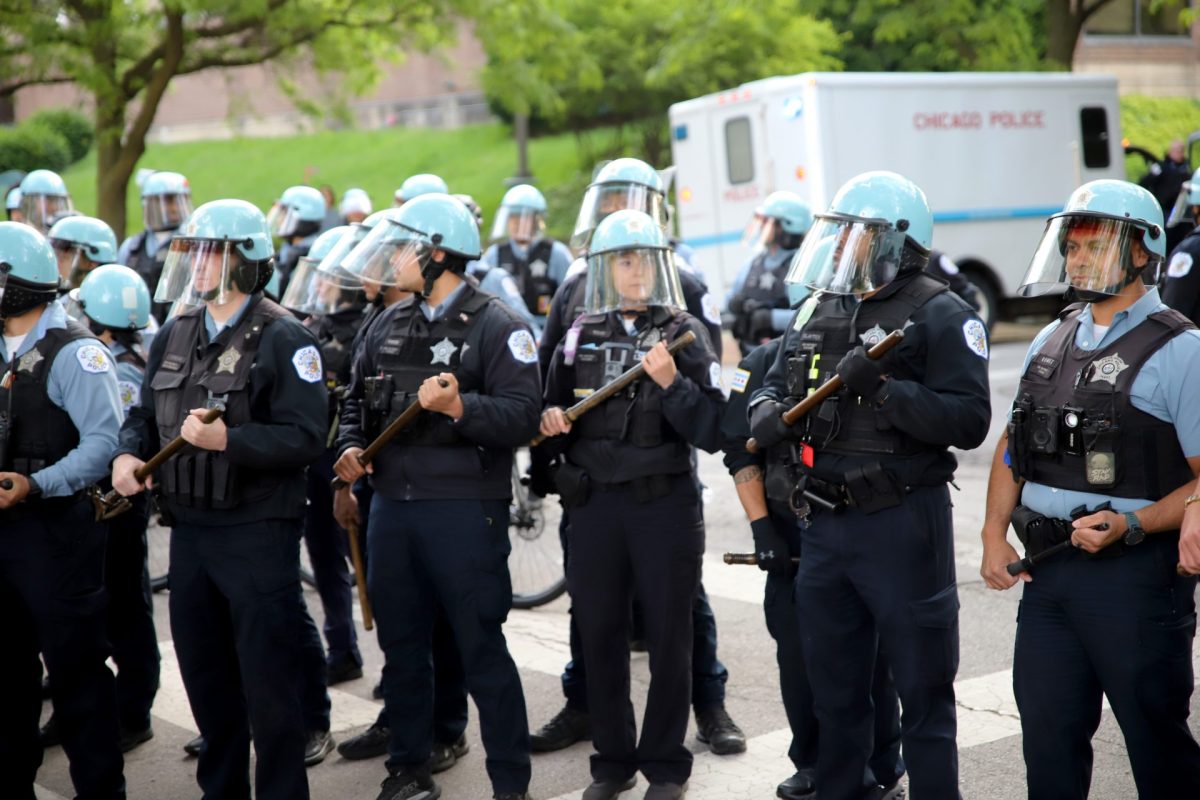The fences are raised, ground cleared and machine equipment moved into place for phase one of the $60 million Navy Pier Flyover project extending Lakefront Trail over the Chicago River.
The Flyover is a 16-foot wide bridge designated for cyclists and pedestrians that will extend from north of the Ohio Street Beach to south of the Chicago River. It will run alongside mid-level Lakeshore Drive and, according to the project’s website, provide a “low profile.”
“The Lakefront Trail has grown to become one of the most popular features of our shoreline,” Mayor Rahm Emanuel said at the ground breaking ceremony. “We are taking the first steps in making it more enjoyable, more accessible and safer for future generations.”
The first of three phases is budgeted at $22.5 million, and includes construction management, QA services, the force amount and contingency costs. Phase one will be completed in December 2015, with the entire project’s completion set for 2018.
The project is overseen by the Chicago Department of Transportation and primarily funded by the Congestion Mitigation Air Quality Improvement fund (CMAQ) from the U.S. Department of Transportation. The construction contract was awarded $26.4 million in total, with additional funding coming from the State of Illinois.
Illinois Transportation Secretary Ann L. Schneider said the state is proud to contribute to the Flyover project. “This project will only serve to further improve public access to one of the state’s prized landmarks,” Schneider said in a press release.
According to the city press release, Navy Pier marks one of the most frequently used portions of the 18.5-mile Lakefront Trail. In addition to accommodating crowds, however, the trail forces pedestrians to cross over a bridge that in places narrows to only 6 feet wide.
Matt LeMoine, a daily commuter and active member of the cycling community in Chicago, calls Lakefront Trail near Navy Pier a “nightmare.”
“It’s more dangerous than riding on the street honestly,” LeMoine said.
On an average Saturday, cyclists, runners and walkers funnel through the narrow sidewalks of the bridge while cars speed past, only inches from the unguarded curb. LeMoine said he rarely rides along the path because it is so crowded.
“I’ve seen some pretty bad stuff happen [on the Lakefront Trail],” LeMoine said. “People aren’t really paying attention and some people ride way too fast.”
In the instance of a crash, LeMoine noted, there’s “really no time to react.”
The $60 million Flyover project is something LeMoine doesn’t see benefiting the average cyclist commuter.
“(The Flyover project) is really going to benefit tourism, like people who come down to the city to ride on the lakefront on the weekends,” LeMoine said.
Enhancing the lakefront experience for tourists is something transportation and DePaul Professor and public policy expert Dr. Joseph P. Schwieterman said is crucial to sustaining tourist stops like Navy Pier.
“The problem with Navy Pier is that people go once and never go back,” Schwieterman said.
The commercialized, overpriced and gimmicky feel of Navy Pier is currently a deterrent for Chicagoans.
The Lakefront Trail is a “bonus” for the city, according to Schwieterman. The trail has become a “world class tradition with minimal investment by the city,” with mayors never having to “make it hurt” for taxpayers to improve it.
“The (Flyover project) is a great opportunity that will soften the Pier’s image and be less of a barrier to bicyclists,” Schwieterman said.
In recent years, Schwieterman and cyclists like LeMoine have noticed increased popularity in biking in Chicago. In 2012, the League of American Bicyclists reported a 214.4 percent increase in daily cyclist commuters in Chicago since 2000.
The League of American Bicyclists currently ranks Illinois as the 9th most “bicycle-friendly” state, and gives Chicago a “silver” award for bike friendliness. The report estimates that 1.4 percent of Chicago’s total population commutes regularly by bicycle and 6.31 percent on foot.
Initiatives taken by Mayor Emanuel to increase ridership include the Divvy bike share system launched last year and the 2020 Streets for Cycling Plan. The plan, separate from the Flyover project, aims to boost safety for cyclists in Chicago by developing more than 500 miles of on-street bikeways, including bike lanes with barriers as added protection.
These are precisely the improvements to which LeMoine felt the city should dedicate its funds.
“There’s a very small percentage of people who would commute to work via the (Lakefront Trail),” LeMoine said. “I think the percentage that (the Flyover) would serve is not quite what (city officials) would expect.”
Construction for the first phase of the Flyover began March 24 at Jane Addams Park. So far, there are few visible signs of construction, but drivers on Lakeshore Drive will notice lane closures that will last until September of this year.
Cyclists and pedestrians will have full access to the Lakefront Trail throughout construction, but not without detours. Maps of the detour routes are available on the NavyPierFlyover website.







